LINDEN, BIG-LEAF or LIME, LARGE-LEAFED
Greek : Philyra
Species : Tilia platyphyllos
Description : A deciduous tree which grows to a height of 60 to 80 feet. The linden blooms with fragrant yellowish-white flowers in mid-summer.
Sacred to : Perhaps Aphrodite
Myth 1 : Metamorphosis Philyre. Philyra was a Thessalian Nymphe loved by the Titan Kronos. When his wife Rhea interrupted their rendeavous he transformed himself into a horse and fled. Philyra was later so ashamed at having given birth to the half-horse Kheiron that she begged Zeus to change her form. He agreed, transforming her into a linden tree. (Source: Hyginus)
Myth 2 : Metamorphosis Baukis. Philemon and Baukis were a pious couple who hospitably received the gods Zeus and Hermes when they were travelling amongst mankind in disguise. The gods destroyed those who had turned them away and rewarded the couple by making them priests of the temple and transforming them into a pair of entwined trees at death: Baukis a linden, and Philemon an oak. (Source: Ovid)
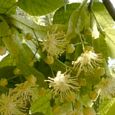 |
LINDEN
Tilia platyphyllos |
 |
LOTUS TREE
Diospyrus lotus |
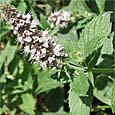 |
MINT, SPEAR
Mentha spicata |
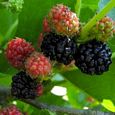 |
MULBERRY
Morus nigra |
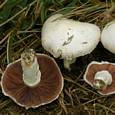 |
MUSHROOM
Agaricus campestris |
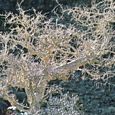 |
MYRRH TREE
Commiphora myrrha |
LOTUS TREE or DATE PLUM
Greek : Lotos
Species : Diospyrus lotus
Description : A small deciduous tree which flowers with lotus-shaped blossoms in mid-summer. Its sweet red fruit ripens in late autumn.
Sacred to : Priapos
Myth 1 : Metamorphosis Lotis. Lotis was a Dryopian Nymphe who was transformed into a lotus-tree to escape the lustful pursuit of the god Priapos. (Source: Ovid)
Myth 2 : Tribe of the Lotus-Eaters. The Lotus-Eaters (Greek Lotophagoi) were a tribe of men addicted to the honey-sweet fruit of the lotus tree.Tthe hero Odysseus encountered them during his travels. When some of his men tasted the fruit, they lost the desire to leave and had to be dragged, bound, back to the ship. (Source: Homer)
MINT, SPEAR
Greek : Minthê
Species : Mentha spicata (or viridis)
Description : An herbaceous perennial with aromatic leaves.
Sacred to : Demeter and Persephone (the sacred barley-drink of the Eleusinian Mysteries was flavoured with mint), Haides (aromatic mint was perhaps used on the bodies of the dead)
Mythology : Metamorphosis Minthe. Minthe was a Nymph loved by the god Haides. When she boasted that she was superior to his queen Persephone, the goddess, or her mother Demeter, transformed her into the mint plant. (Sources: Strabo, Ovid, Oppian)
"MOLY PLANT"
Greek : Môlu
Species : Unknown (perhaps entirely mythical)
Description : A poisonous herb with black roots and milk-white flowers.
Mythology : Witchcraft of Kirke. When Odysseus was travelling to the palace of the witch Kirke, the god Hermes plucked a moly plant from the earth and presented it to the hero for protection against her magics. (Source: Homer)
MULBERRY, BLACK
Greek : Moron
Species : Morus nigra
Description : A small deciduous tree or bush native to western Asia. It is cultivated for its juicy, dark-red berries.
Myth 1 : Death of Pyramos & Thisbe. Pyramos and Thisbe were a pair of ill-fated lovers from the Assyrian city of Babylon. Their parents forbade their romance and the pair agreed to meet secretly beneath a white-berried mulberry tree outside the city limits. When Pyramos arrived he found Thisbe's shawl in the jaws of a lion and believing her killed plunged a sword through his breast. The girl upon discovering her dead lover also killed herself. The mulberry tree soaked up the lovers' blood and its berries were turned from white to black-red. (Source: Ovid)
Myth 2 : Hamadryas Morea. The Hamadryad nymph of the mulberry-tree. (Source: Athenaeus)
MUSHROOM, FIELD
Greek : Mukês
Species : Agaricus campestris and other species
Descriptions : Mushrooms were regarded as a delicacy in the ancient world and were harvested from the wild.
Mythology : Origin of Ephyraian Men. After the Great Deluge the Isthmos was repopulated by men grown from mushrooms. (Source: Ovid)
MYRRH TREE
Greek : Smyrna, myrra
Species : Commiphora myrrha
Description : A small, spiny desert tree native to Arabia and the horn of Africa. Its valuable, aromatic gum resin was harvested and burnt as an incense in ancient religious shrines.
Sacred to : Aphrodite (festal myrrh incense)
Myth : Metamorphosis Smyrna. Smyrna (or Myrrha) was a Cyprian, Lebanese or Assyrian princess whose mother dared to compare her in beauty to the goddess Aphrodite. The offended divinity caused the girl to fall in love with her own father as punishment. When the King discovered his daughter had seduced him in disguise, he pursued her with an axe, but the goddess mercifully intervened by transforming Smyrna into a myrrh tree. Adonis was later born of the incestuous union from the tree's trunk and entrusted to the care of Nymphs. The tears of the girl formed the aromatic gum of myrrh. A similar story was told of Myrrha and the myrtle tree. (Sources: Apollodorus, Antoninus Liberalis, Plutarch, Hyginus, Ovid)
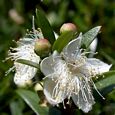 |
MYRTLE
Myrtus communis |
 |
NARCISSUS
Narcissus tazetta |
 |
NARCISSUS
Narcissus poeticus |
 |
OAK, HOLM
Quercus ilex |
 |
OLIVE TREE
Olea europaea |
MYRTLE
Greek : Myrsinê, myrrinê, myrtos
Species : Myrtus communis
Description : A small evergreen tree or shrub with aromatic, spicy-tasting leaves. It blooms with sweet-scented, white flowers in spring and summer, and produces edible blue-black berries.
Sacred to : Aphrodite (brides wore myrtle-garlands and bathed in myrtle-scented water on their wedding day)
Myth : Metamorphosis Myrrha. Myrrha was a Cyprian princess who fell in love with her father and conspired to seduce him in disguise. When he learned of her crime, she fled his wrath and was transformed into a myrtle tree. The boy Adonis was later born from her trunk. The same story was told of Myrrha or Smyrna and the myrrh tree. (Source: Pausanias)
NARCISSUS, POLYANTHUS or DAFFODIL, MINNOW
Also : Poet's Narcissus or Pheasant's eye Daffodil, and Late Daffodil
Greek : Narkissos, leirion
Species : Narcissus tazetta, N. poeticus, N. serotinus
Description : A late winter, early spring flowering bulb with pale cream-petalled and yellow-trumpeted blooms. According to Plutarch, the plant was named for the numbing effect (narkê) of the ingested bulb.
Myth 1 : Metamorphosis Narkissos. Narkissos was a hubristic youth who callously scorned all those who sought to court him. The goddess Nemesis exacted revenge by causing him to fall in love with his own reflection. The boy became obsessed with the image and slowly wasting away was transformed into a narcissus flower. (Source: Ovid)
Myth 2 : Nymphe Leiriope. Leiriope was a Phokian Nymph, and the mother of the hubristic boy Narkissos (above). Her name means "narcissus-face" suggesting that she, like her son, may have been transformed into a daffodil flower. (Source: Ovid)
Myth 3 : Rape of Persephone. The goddess Persephone and her companion Nymphs were gathering rose, crocus, violet, iris, lily and larkspur blooms in a springtime meadow when she was lured away by a cluster of bright narcissus flowers produced by Gaia the Earth. When she went to pluck them, the god Haides seized and carried her off to the underworld to be his bride. (Source: Homeric Hymns)
OAK, HOLM and OAK, VALONIA
Also : Evergreen oak, prickly-cupped oak and ilex (alternative names for the holm)
Greek : Drys
Species : Quercus ilex, Q. ithaburensis macrolepis and Q. aegilops
Description : The oak was the dominant tree of the ancient Greek landscape. In fact the ancient Greek word for oak, 'drys', was also the word for tree. The two main commonly found in the region are the evergreen holm oak and the deciduous Valonian. Both range in size from thick low shrub (forming the basis of the modern-day Meditteranean scrub forests) to large trees. They were valued for their wood and for the autumn-ripening acorns. Tanin was also extracted from the acorn cups of the Valonian oak. This substance was a vital component employed in the tanning of leather hides.
In Greek lore, the primitive, pre-agrarian tribes of Arkadia were said to have lived on a stable diet of acorns. In classical times it was a food only of last resort consumed in times of famine. Usually acorns were reserved for animal feed.
Sacred to : Zeus (gave his oracles from the sacred oaks of Dodona)
Myth 1 : Nymphai Dryades. Dryads or Hamadryads were Nymphs whose life force was irrevocably bound up with that of a tree, usually a mighty oak. At their birth, a symbiotic plant sprang up fully grown from the earth and when they died it withered away. The premature felling of the tree also brought about the death of the Nymph. (Source: Various)
Myth 2 : Metamorphosis Byblis. Byblis was a Miletian princess who fell in love with her own brother. When the boy rejected her advances, she fled in shame, and cast herself off a mountainside. The Nymphs pitied her fate and transformed Byblis into a holm oak Dryad. Her tears became a spring which rose from the tree's roots. (Sources: Antoninus Liberalis, Ovid)
Myth 3 : Metamorphosis Philemon. Philemon and Baukis were a pious couple who hospitably received the gods Zeus and Hermes when they were travelling amongst mankind in disguise. The gods destroyed those who had turned them away and rewarded the couple by making them priests of the temple and transforming them into a pair of entwined trees at death: Baukis a linden, and Philemon an oak. (Source: Ovid)
Myth 4 : The Golden Fleece. The golden fleece was nailed to the branches of an oak tree in the sacred grove of Ares at Kolkhis. The god sent a giant serpent (drakon) to guard it. (Source: Apollodorus, Apollonius Rhodius, Valerius Flaccus)
Myth 5 : Sacrilege of Erysikthon. See Poplar, black.
Myth 6 : Hamadryas Balanos. The Hamadryad nymph of the acorn. (Source: Athenaeus)
OLIVE TREE
Greek : Elaia, moria
Species : Olea europaea
Description : The olive was the most important tree of ancient Greek horticulture. The fruit was used as a relish with bread, and its oil employed in cooking, lamps for light, and as a, sometimes perfumed, lotion for the skin and hair.
Sacred to : Athene (the most sacred olive tree grew in her sanctuary on the Acropolis of Athens) ; Zeus (victors at the Olympian Games were crowned with wild olive)
Myth 1 : Contest for Athens. Athene and Poseidon once engaged in a contest for dominion of Athens. Zeus agreed to award the city to the god who produced the best gift for man. Athene then created the first olive tree which she caused to spring forth from the rock of the Akropolis, whilst Poseidon produced a horse. The gods judged Athene's the better gift and awarded her the city. (Source: Apollodorus, Pausanias, Hyginus, Ovid)
Myth 2 : Metamorphosis Moria. Moria was an Athenian maiden dear to the goddess Athena. At her death the goddess transformed her into a sacred olive tree (moria). (Source: tba)
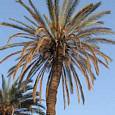 |
PALM, DATE
Phoenix dactylifera |
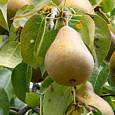 |
PEAR TREE
Pyrus communis |
 |
PINE, ALEPPO
Pinus halepensis |
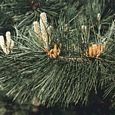 |
PINE, CORSICAN
Pinus nigra laricio |
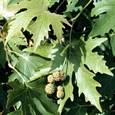 |
| PLANE, ORIENTAL
Platanus orientalis |
 |
"PLANY"
Artemisia |
PALM, DATE
Greek : Phoinix
Species : Phoenix dactylifera
Description :A medium sized tree which grows to a height of 15 to 25 metres. Its edible dates are harvested.
Sacred to : Apollon and Leto (the sacred palm tree of Apollon's birth grew in his sanctuary on the island of Delos); Nike (the goddess of victory held a palm branch as an attribute).
Mythology : Birth of Apollon. The goddess Leto gave birth to Apollon on hte island of Delos whilst clinging to a palm tree beside the Inopos River. (Source: Homeric Hymns, Callimachus, et al)
PARSLEY
See Celery (both were called selinon in Greek and barely distinguished)
PEAR TREE
Greek : Onkhnê, apios
Species : Pyrus communis
Description : The pear was one of the mainstays of the ancient Greek orchard, alongside the apple, pomegranate, fig and olive. Despite its prominence the tree is curiously absent from myth. The travel writer Pausanias mentions an old cult statue or two crafted out of pear-wood.
"But without the courtyard, hard by the door, is a great orchard of four acres, and a hedge runs about it on either side. Therein grow trees, tall and luxuriant, pears and pomegranates and apple-trees with their bright fruit, and sweet figs, and luxuriant olives." Homer's Odyssey 7.112
PINE, ALEPPO and PINE, TURKISH
Greek : Peukê, pitys
Species : Pinus halepensis and Pinus brutia
Description : The Aleppo is a coastal pine which grows to a height of 15 to 25 metres. The Turkish pine is another coastal pine, somewhat larger at 20 to 35 metres, with edible seeds. Pine wood was commonly used by the ancients for shipbuilding and also for torches.
Sacred to : Poseidon (victors at the god's Isthmian games were crowned with wreaths of pine; he had sacred pine groves at Korinthos and Onkhestos) ; Dionysos (his devotees wielded pine or fir-cone tipped thrysoi staffs)
Mythology : Banditry of Sinis. Sinis Pityokamptes (the Pine-Bender) was a Korinthian bandit, and a son of the god Poseidon, who waylayed travellers passing through the Isthmos. He bound his victims to the tops of curbed pine-trees and let spring up to tear the men asunder. Sinis was slain by Theseus in the same manner. Afterwards the hero instituted the Isthmian Games to appease the ghost of Sinis and his father Poseidon. (Sources: Apollodorus, Plutarch, et al)
PINE, CORSICAN and PINE, STONE
Greek : Pitys, peukê
Species : Pinus nigra laricio and Pinus pinea and Pinus brutia
Description : The Corsican pine is a mountain growing tree which reaches a height of 20 to 55 metres. It is a subspecies of the European black pine. The stone pine is smaller, at 15 to 25 metres, has umbrella-shaped crown and produces the edible pine nut.
Sacred to : Pan (the god had sacred pine groves on Mount Mainalos) ; Dionysos (as per the Aleppo pine)
Myth 1 : Metamorphosis Pitys. Pitys was a nymph loved by the god Pan. She fled his advances and was transformed into a pine tree. (Source: Lucian, Nonnus)
Myth 2 : Nymphai Oreiades. The Oreiades were nymphs of the mountain peaks who were born and who died with their native pines. (Source: Homeric Hymns)
Myth 3 : Metamorphosis Oikhaliai. When the Oikhalian princess Dryope had departed to join the nymphs, maidens of the village spread the rumour that she had been abducted. The nymphs were angered by this and transformed the girls into pine trees. (Source: Antoninus Liberalis)
PLANE, ORIENTAL
Greek : Platanos
Species : Platanus orientalis
Description : A wide-spreading deciduous tree usually found growing in river plains. The tree produces round, burr-like fruits in autumn. Many Greek cities, including Athens, planted plane trees for shade. Plane and elm tree saplings were also used for vine trellacing.
Sacred to : Helene (at Sparta, girls celebrated her wedding by pouring libations of oil and hanging garlands on her sacred plane tree)
Myth 1 : Sacrifice at Aulis. When the Greek fleet was gathered at Aulis in preparation for the departure to Troy, Agamamemnon and the other leaders made sacrifices to the gods beneath the sacred plane tree. Zeus then sent an omen: a speckled serpent devoured a nest of birds in the tree, eight chicks with their mother, and was afterwards turned to stone. The seer Kalkhas interpreted this to mean that the Trojan War would last nine years with Troy finally falling in the tenth. (Source: Homer)
Myth 2 : Death of Helene. After the death of her husband Menelaus, Helene sought refuge with Queen Polyxo of Rhodes. The woman nursed a grudge for the death of her husband in the Trojan War, and with her handmaidens, dressed themselves up as Erinyes and hung Helene from a plane tree. She was afterwards worshipped as Helene Dendrytis (of the Tree). (Source: Pausanias)
"PLANY PLANT"
Greek : Psalakantha
Species : Unknown, similar to Artemisia absinthium and Melilot officinalis
Description : According to ancient sources the plany resembled or was a type of absinth wormwood (aka armoise), a herbaceous perennial with silvery green leaves and pale yellow flowers. It was also likened to melilot (yellow sweet clover).
Sacred to : Dionysos & Ariadne (a wreath of the plant was probably worn at their Naxian and Ikarian festivals)
Mythology : Metamorphosis Psalakantha. Psalakantha was an Ikarian who Dionysos sought to assist him in the wooing of Ariadne. She, however, developed a passion for the god and, when he refused her tried, to dissuade Ariadne from the union. The god in anger transformed her into a plany plant, but afterwards, feeling remorse set her plant in the crown of his wife. (Ptolemy Hephaestion)
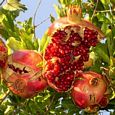 |
POMEGRANATE
Punica granatum |
 |
POPLAR, BLACK
Populus nigra |
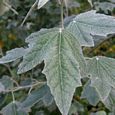 |
POPLAR, WHITE
Populus alba |
 |
POPPY, OPIUM
Papaver somniferum |
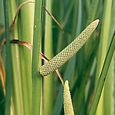 |
REED,SWEET FLAG
Acorus calamus |
 |
ROCK ROSE
Cistus villosus |
POMEGRANATE TREE
Greek : Rhoa, sidê
Species : Punica granatum
Description : A fruit-bearing deciduous shrub or small tree which grows to a height of 5 to 8 metres. It produces a red fruit about the size of an orange, rich in seeds and with a juicy red fruit pulp. The tree was cultivated in ancient orchards alongside the apple, pear, fig and olive..
Sacred to : Hera (the fruit was her attribute as goddess of marriage - the bloody red seeds representing female fertility), Aphrodite (for similar reasons)
Prohibitions : Demeter and Persephone (the fruit was one of the foods prohibited in the Mystery initiations)
Myth 1 : Metamorphosis Side. Side was the wife of the giant Orion who boasted to be more beautiful than the goddess Hera. In anger the goddess sent her to Haides. Presumably this was accompanied by a metamorphosis into her namesake fruit tree, the pomegranate. (Source: Apollodorus)
Myth 2 : Rape of Persephone. Haides the king of the underworld abducted Persephone for his wife. She refused to eat while she remained with him, until he tempted her with the seed of the pomegranate. She tasted these and in so doing was condemned to spend a portion of each year in the underworld. (Source: Homeric Hymns, et. al.)
Myth 3 : Orchadist Askalaphos. The keeper of the pomegranate orchards of Haides reported to his master that Persephone had tasted of the seed. As punishment for this Demeter turned him into a screech owl. (Source: Apollodorus, Ovid)
POPLAR, BLACK
Greek : Aigeiros
Species : Populus nigra
Description : A tall, narrow deciduous tree which grows to a height of 30 to 40 metres. Poplars are commonly found growing along the banks of rivers.
Sacred to : Helios (the trees as sources of amber), Persephone (Homer describes her sacred poplar and willow tree grove near the entrance of Hades)
Myth 1 : Metamorphosis Heliades. The Heliades were nymph daughters of the sun-god Helios. After the death of their brother Phaethon, who had fallen from the chariot of the sun, the sisters gathered on the banks of the northern river Eridanos in ceaseless mourning and were transformed into amber-teared poplar trees.
Myth 2 : Metamorphosis Sperkheides. The Sperkheides were nymphs of the river Sperkheios in Malis. While Poseidon was seducing their sister Diopatre, he transformed them into poplar trees. (Source: Antoninus Liberalis)
Myth 3 : Metamorphosis Dryope. Dryope was a princess of Oikhalia loved by the god Apollon. When their son was grown, she departed with the Hamadryad nymphs (her aunts) who transformed her into a sacred poplar in the god's sanctuary. Others say this occurred after she plucked the flower of the metamorphosed nymph Lotis. (Source: Antoninus Liberalis, Ovid)
Myth 4 : Metamorphosis Hesperides. When Orpheus and the Argonauts encountered the Hesperides in their garden, the three nymphs transformed themselves into trees: Erytheia became an elm (ptelea), Hesperiea poplar (aigeiros), and Aigle a willow tree (itea). (Source: Apollonius Rhodius)
Myth 4 : Sacrilege of Erysikhthon.
The Thessalian king Erysikhthon felled the holy poplars or oak tree in the sacred grove of the goddess Demeter, in order to build a roof for his feast-hall. The Dryad nymphs cried out in pain, and as punishment the goddess inflicted him with an unquenchable hunger. (Source: Callimachus, Ovid)
Myth 5 : Hamadryas Aigeiros. The Hamadryad nymph of the black poplar tree. (Source: Athenaeus)
POPLAR, WHITE
Greek : Leukê
Species : Populus alba
Description : A deciduous tree which grows to a height of 15 to 25 metres. Its has smooth, grey-white bark, and leaves which are green on top with white undersides. New leaves are covered in a whitish-grey down.
Sacred to : Haides (white poplars grew abundantly around the river Akheron in Thesprotia where the god had his oracle of the dead) ; Zeus and Herakles (the tree was established at Olympia by Herakles when he founded the games ; the Eleians also used its wood for the sacrificial fires of Zeus and titled him Leukaios, god of the white poplar)
Myth 1 : Metamorphosis Leuke. Leuke was a nymph who was carried off by the god Haides. After her death she was transformed into a white poplar in Elysium. (Source: Servius).
Myth 2 : Herakles & the Olympics. When Herakles established the Olympic games at Olympia he introduced the white poplar from Thesprotia for its shade. (Source: Pindar, Pausanias, et al)
POPPY, CORN and POPPY, OPIUM
Greek : Mêkôn
Species : Papaver rhoeus and Papaver somniferum
Description : A bright red spring and summer flowing perennial. The ancients apparently planted it in their crop rotations to revitalise the soil. It was also naturally found growing amongst the wheat fields. Opiates were extracted from the seed of the opium poppy variety.
Sacred to : Demeter (poppy flowers were used for festive adornment, and a cake baked with poppy-seeds featured in her mysteries; opiates may also have been used in some of her Mystery cults), Hypnos (the god of sleep dripped poppy juice, i.e. opium, from his wand)
Mythology : Metamorphosis Mekon. Mekon was a youth loved by the goddess Demeter. Following his premature death she transformed him into a poppy flower. (Source: Servius)
REED, SWEET FLAG or CALAMUS
Greek : Kalamos
Species : Acorus calamus
Description : A perennial wetland reed with scented leaves. Its seed spikes grow on tall stalks. The rustic panpipe of the ancients was made from the hollowed out stalks of the plant..
Sacred to : Pan (his famous panpipes were crafted from its hollow stalks, and the spikes were a phallic symbol) ; Dionysos (the rhizome was a wine additive, and the spike a phallic symbol)
Myth 1 : Metamorphosis Syrinx. Syrinx was a nymph loved by the god Pan. She fled his advances and reaching the banks of hte river Ladon transformed into a stand of reeds to escape him. The god made his panpipes from her stalks. (Source: Ovid, Nonnus)
Myth 2 : Metamorphosis Kalamos. Kalamos was a son of the Karian river Maiandros. When his beloved Karpos (fruit) drowned, the grievingKalamos was transformed into a stand of reeds. (Source: Nonnus)
ROCK-ROSE
Greek : Kisthos
Species : Cistus villosus
Description : A low growing perennial shrub with large, delicate, pink or yellow flowers.
Sacred to : Poseidon (perhaps)
Mythology : Seduction of Medousa. The Gorgon Medousa was seduced by Poseidon in a meadow of rock roses on the island of Kisthene. The isle was named Kisthene for the flower kisthos.
 |
ROSE, GALLIC
Rosa gallica |
 |
STRAWBERY TREE
Arbutus unedo |
 |
VIOLET, SWEET
Viola odorata |
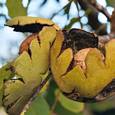 |
| WALNUT, PERSIAN
Juglans regia |
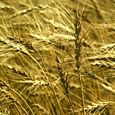 |
WHEAT
Triticum vulgare |
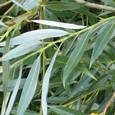 |
WILLOW, WHITE
Salix alba |
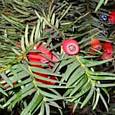 |
YEW
Taxus baccata |
ROSE, GALLIC
Greek : Rhodon
Species : Rosa gallica
Description : A deciduous thorny shrub with bright pink flowers. The rose was cultivated by the Greeks and Romans.
Sacred to : Aphrodite (symbol of love)
Myth 1 : Death of Adonis. The flower was said to have sprung or been coloured by the blood of Aphrodite's dying love Adonis.
Myth 2 : Bouquet of Persephone The goddess Persephone and her companion Nymphs were gathering rose, crocus, violet, iris, lily and larkspur blooms in a springtime meadow when she was abducted by the god Haides. (Source: Homeric Hymns)
STRAWBERRY TREE, GRECIAN
Greek : Andrakhnos, komaros
Species : Arbutus andrachne and Arbutus unedo
Description : A small evergreen tree or shrub which grows to a height of 5 to 10 metres. It produces bell shaped flowers in spring, and red berries in the autumn. The fruit is edible but bland.
Sacred to : Hermes (a sacred strawberry tree stood in his sanctuary at Tanagra).
Mythology : Birth of Hermes. The infant god was nursed beneath a strawberry tree. (Source: Pausanias)
VIOLET, SWEET
Greek : Ion
Species : Viola odorata
Description : A small perennial with sweet-scented, violet-coloured flowers.
Sacred to : Apollon (perhaps)
Myth 1 : Birth of Iamos. Iamos was a son of Apollon and the nymph Euadne. He was abandoned by his mother at birth. She left him lying in the Arkadian wilds on a bed of violets where he was fed honey by serpents. Eventually he was discovered by passing shepherds who named him Iamos after the violet (ion) bed. (Source: Pindar)
Myth 2 : Bouquet of Persephone The goddess Persephone and her companion Nymphs were gathering rose, crocus, violet, iris, lily and larkspur blooms in a springtime meadow when she was abducted by the god Haides. (Source: Homeric Hymns)
WALNUT, PERSIAN
Also : English walnut, and the Hazelnut and Sweet chestnut trees
Greek : Karya
Species : Juglans regia, Coryllus avellana, Castanea vesca
Description : The Greek word karya was used for three types of nut tree, but usually the walnut and hazel. The walnut is a deciduous tree growing 25 to 35 metres tall. The male flowers are drooping catkins which fruit in autumn with green, fleshy husks containing an edible nut. Walnuts, as well as hazelnuts and sweet chestnuts were harvested by the ancients.
Sacred to : Artemis (had a sacred grove of sacred walnut or hazelnut trees at Karyai in Lakonia; the priestesses were named Karyatides, i.e. "ladies of the nut tree")
Myth 1 : Metamorphosis Karya. Karya was a Lakonian maiden loved by the god Dionysos. When her two sisters tried to prevent the liaison, the pair were driven mad and having gone to Mount Taygetos were transformed into stones. Karya meanwhile died and was changed into a nut tree. The goddess Artemis informed her father Dion of the affair and commanded he found a sanctuary in honour of Artemis Karyatis. (Source: Servius)
Myth 2 : Hamadryas Karya. The Hamadryad nymph of the nut-tree. (Source: Athenaeus)
WHEAT
Greek : Pyros
Species : Triticum vulgare
Description : The chief agricultural crop. The Greeks sowed in late autumn or early and spring, and reaped the ripened grain in mid summer.
Sacred to : Demeter and Persephone (goddesses of the grain)
Myth 1 : Demeter Bestows Grain. After the return of Persephone from the underworld, Demeter bestowed the art of agriculture upon mankind. (Source: Homeric Hymns, et al)
Myth 2 : Instruction of Triptolemos. The Eleusinian hero Triptolemos was given a chariot drawn by flying serpents by the goddess Demeter and sent to instruct the whole of mankind in the art of agriculture. (Source: Homeric Hymns, et al)
"WILLOW", VITEX
See Chaste tree
WILLOW, WHITE
Greek : Itea
Species : Salix alba
Description : A deciduous tree which grows to a height of 20 to 30 metres tall. Silky white hairs on its long thin leaves give the tree a silver sheen. Its flowers are catkins. Wicker baskets, shields and other items were made from its stems.
Sacred to : Persephone (Homer describes her sacred grove of willows and black poplars near the entrance of Hades)
Mythology : Metamorphosis Hesperides. When Orpheus and the Argonauts encountered the Hesperides in their garden, the three nymphs transformed themselves into trees: Erytheia became an elm (ptelea), Hesperiea poplar (aigeiros), and Aigle a willow tree (itea). (Source: Apollonius Rhodius)
WOLF'S BANE
See Aconite
YEW, EUROPEAN
Also : Common yew, English yew
Greek : Smilos, milos, taxos
Species : Taxus baccata
Description : A small to medium-sized evergreen conifer growing to a height of 10 to 20 metres. The plant fruits with small red berries. The strong, flexible wood of the yew was used by the ancients for crafting bows. The leaves and seeds are toxic, and the burning wood emits toxic fumes.
Sacred to : The Erinyes (a yew branch was one of their attributes, used to drip purifying drops of water and as a flaming torch).
PREVIOUS: PLANT MYTHS PAGE 1 PLANT MYTHS PAGE 1
|
 |